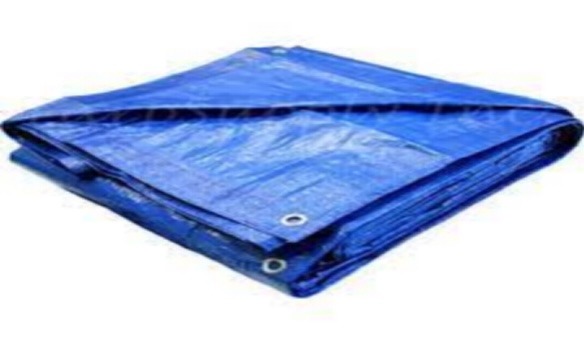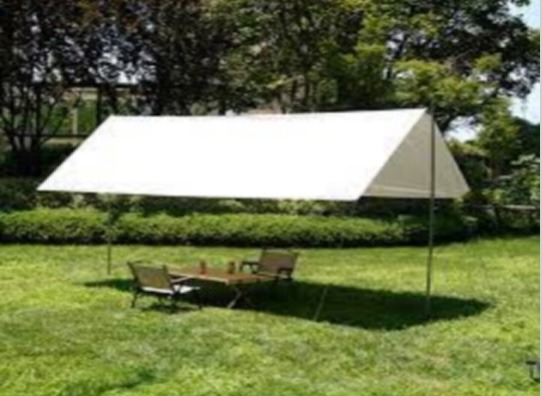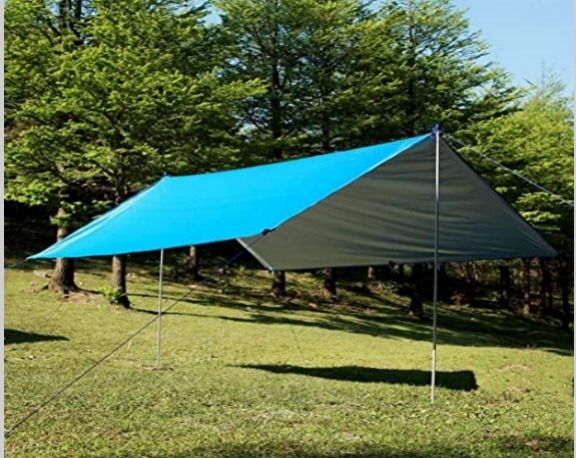Tarps are an excellent investment for anyone who spends more than 10 to 15 minutes outside. Tarps can provide shade, which helps reduce the risk of skin cancer. On rainy days, they also increase the length of time you can stay outside. Make sure you choose the appropriate shade tarp before buying one to cover a patio, deck, or play area.
Factors to consider when choosing a tarp for sun protection
Consider the goals you have with your sunshade. Instead of being water-resistant, you want it to be waterproof. You question how long it will last. You might wish to stay away from the vinyl or plastic tarp’s overpowering chemical odor. If possible, ensure your tarp can endure the sun’s powerful beams.
Do you reside in an area where rainy days are equally frequent as sunny ones? Or do you live somewhere where it doesn’t rain very often? That will influence your choice because tarps that are water-resistant might not withstand a downpour. You need a tarp that can withstand sudden temperature fluctuations, such as when the springtime weather shifts from being 80 degrees Fahrenheit one day to snowing and icy the next.
Tarp weights are frequently listed. It is a weight per yard. One yard of this tarp weighs 10 ounces if the label on it says 10 ounces. When determining how much weight your pergola or structure can support is crucial. Make a list of the key characteristics vital to you, then compare these sunshade tarp options.
The best tarps for sun protection
- Canvas tarps
Canvas tarps are commonly used outdoors. Consider a fire-retardant tarp if a patio heater or fire pit is nearby in your outdoor area. It has a flame resistance layer to help in fighting fires, though it is water-resistant rather than waterproof.
Natural canvas tarps are ideal drop cloths for painting and covers for outdoor machinery and equipment. The water-resistant type is the best material for spills, light dirt, and drips.
- Polyethylene tarp

Polyethene tarps are another excellent and widely used kind of tarp for offering shade. It is also frequently referred to as Polytarp or PE tarpaulin. Because of its robustness and affordability, this kind of tarp is the most flexible and technologically advanced one on the market.
Propene polymer, a kind of plastic, is generally used to create polyethylene tarps. Water, mildew, and wear and tear cannot harm polyethylene, which is strong, long-lasting, odorless, and resilient. Polyethylene tarps are normally available in two varieties: low-density form and high-density form.
The tarp made of high-density polyethylene weighs more. It might also receive further chemical treatments to give it qualities that make it resistant to radiation and fire.
There are many different colors of polyethylene tarps, including brown, blue, white, and silver tarps. A low-duty polyethylene tarp is an option if your budget is tight. However, if money is not an issue and durability is what you’re after, you could choose high-density polyethylene tarps.
- Vinyl-coated tarp
If you’re looking for a UV tarp, vinyl tarps may be your best option. The UV coating makes it offer sun protection. The vinyl tarps are the strongest and most resilient because they are made of industrial-strength heavy-duty vinyl. They are often used for residential and commercial applications and are very popular in the haulage, construction, agricultural, and industrial industries.
Vinyl tarps are entirely waterproof and immune to sunlight, UV rays, acids, grease, and mildew. They can be made to withstand fire. There are plenty of non-fire-resistant and fire-resistant types of vinyl tarps in the market. Vinyl tarps can also endure nicks and scratches without much risk of being punctured because they are abrasion-resistant. These tarps can last more than ten years with proper care, making them ideal for long-term projects and applications.
How to install a sunshade tarp

Once you’ve selected your shade tarp. It’s time to install it. The easiest method is to tie the tarp’s corners to a tree or post. Setting up and taking down the tarp on sunny days is simple if you can do that. If you don’t have any nearby trees, you will have to install some posts.
If you are using posts, be sure they are firmly lodged and not in danger of falling. This arrangement may be your ideal option if you wish to cover a patio. Build a pergola over the patio for a long-lasting, permanent structure, and use a tarp to cover it as necessary.




